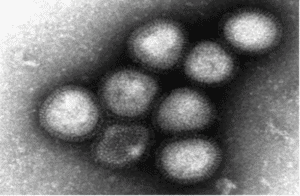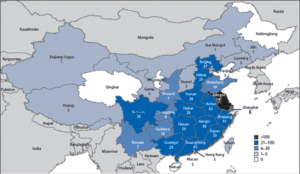
China is currently battling the largest outbreak of bird flu with “the greatest potential to cause a pandemic.” Since its discovery in China in March 2013, avian influenza A (H7N9) has demonstrated an ability to mutate quickly. With these rapid changes, the virus has grown more lethal to poultry—now killing chickens in 24 hours—and less likely to respond to antiviral treatment. This year’s outbreak has drawn attention for its expansive geographic spread, with most regions in China now reporting cases, including areas bordering other nations. It is China’s fifth epidemic of this strain of avian influenza and is now responsible for nearly half of all reported cases of H7N9 following its emergence four years ago.
While it is possible that this strain could lead to a pandemic crisis, it has been confined by its transmission pathways: 90% of all confirmed cases occurred among individuals with direct exposure to live poultry. And while human-to-human transmission is both possible and severe—H7N9 has a 40% mortality rate for humans—the spike in confirmed cases this year appears to be largely attributable to a higher infection rate among poultry. In other words, the volume of infected poultry and the breadth of affected regions, rather than a hike in an incidence of human-to-human infection, is responsible for the surge in reported cases.

Travelers and expatriates living in China should take precautions to avoid exposure to live poultry. Farms and live street markets present a particularly high risk, as do freshly-slaughtered poultry and their droppings. Symptoms of H7N9 are akin to that of the normal flu. Travelers experiencing fever, coughing, and shortness of breath should contact VIGILINT to identify appropriate medical facilities for immediate treatment. If untreated, H7N9 can lead to severe pneumonia and ultimately result in septic shock and multi-organ failure.
The Chinese government anticipates continued sporadic reports of H7N9 throughout the country, and has pledged persistent surveillance of the virus to inform the allocation of epidemic response resources. While there is currently no publicly-available vaccine, the WHO and CDC continue to research candidate vaccines for H7N9. While the current risk of widespread transmission outside of China is low, VIGILINT analysts are watching virus development and mutations carefully to identify strains with pandemic potential.
VIGILINT will alert clients to any significant changes in the outbreak affecting travelers and expatriates in the region.
